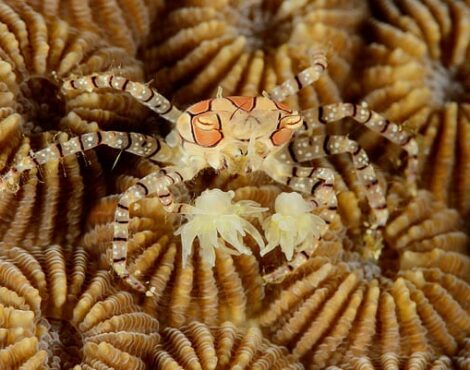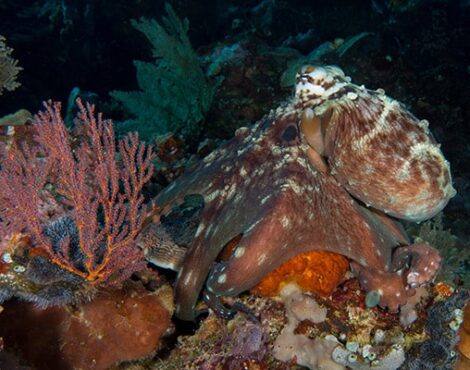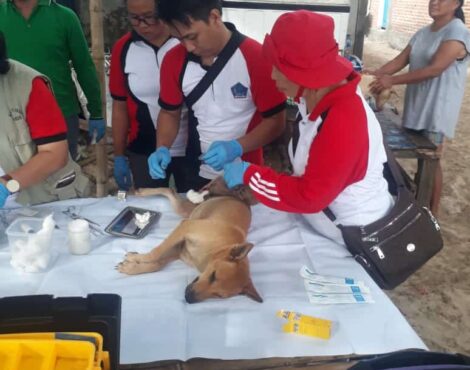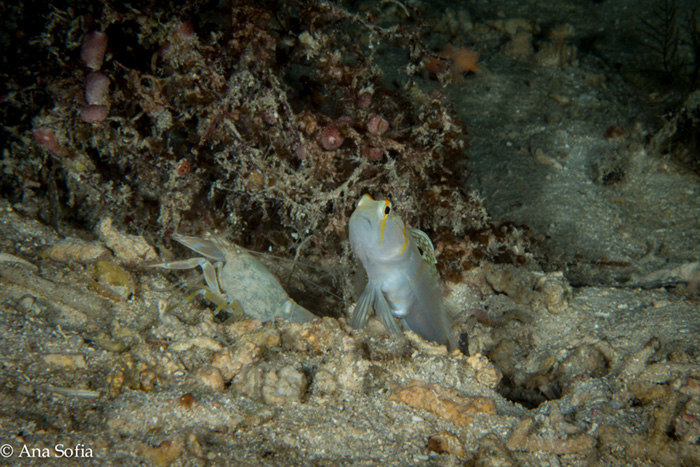
While gazing out to sea, you wouldn’t be wrong to assume that there is enough room out there for everything to live happily in its own space. Although the oceans may be huge, the majority of marine life depend on the reefs, and in places with deep waters such as Bunaken Marine Park, there is not as much free space on the reefs as you may have initially thought. Symbiotic relationships are found throughout the natural world, including humans. Symbiosis is when one species interacts with another species (sometimes more than one), and at least one party involved benefits from this interaction. Sometimes both parties are rewarded for this relationship (mutualism), other times only one gets to reap any benefits (commensalism), and other relationships can result in one species coming to harm to the other (parasitism). The underwater world has countless examples of different symbiotic relationships, but here are a few especially interesting ones that you can witness whilst diving here in North Sulawesi.
Boxer Crabs and Anemones
The Boxer Crab (Lybiaedmondsoni) is a small crab species, reaching less than 2 cm in width. They are well known for their mutualistic relationship with some anemone species, which they carry around in their claws. The crab will wave these anemones around like pom-poms as a defence mechanism, while the anemone will also benefit, as being moved by the crab allows them to capture more food particles with their tentacles.
Pistol Shrimp and Goby
This is a common mutualistic relationship to see whilst muck diving on the sandy slopes of Sulawesi. The Pistol shrimp spends much of its life digging a burrow, but it is not building a home, it is foraging for food just under the surface of the sand. The problem is that the shrimp is blind, and bringing the mud or sand to the surface leaves it exposed to potential predators – so in swims the goby. The goby acts as a look out, wiggling its body when a predator comes close, and both animals retreat into the burrow. The goby also gets a nice place to rest, and a safe place to store their eggs when it is time to breed.
Clownfish and Anemones
Probably the most famous symbiotic relationship due to the popularity of the Pixar movie, Finding Nemo, Clownfish are a favourite amongst divers. They are able to live happily amongst the poisonous tentacles of the anemone due to an immunity to the toxin, while other fish (including predators) will get a nasty sting if they get too close. The anemone also benefits as the constant movement of the clownfish aerates the anemones tentacles, and consuming the clownfish waste.
Emperor shrimps and ….
The emperor shrimp (Periclimenes imperator)is a small shrimp that lives commensally on a number of different species of larger nudibranchs, (such as The Spanish Dancers), sea stars, and sea cucumbers. They utilise their hosts as a taxi, holding on tightly to get around the reef faster. If their host stumbles upon their food source, they will hop off to feed, and get back on when they are done. In this relationship, the shrimp gets all the benefits while the host gets no benefits, however it doesn’t get harmed by it either.
Remoras and …..
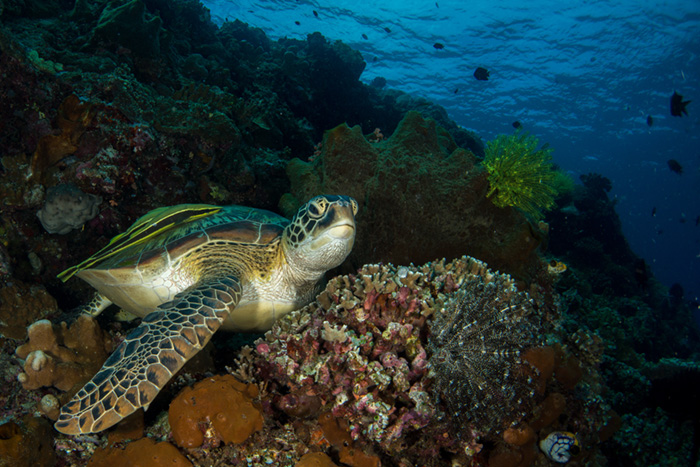
You can frequently spot these whilst diving around some of Bunakens incredible walls, most commonly attached to the shell of a turtle. Known as ‘suckerfish’, they will attach to any creature large enough, be it sharks, turtles, dugongs, mantas, pufferfish or even divers. All they need it a large flat area to grip on. The remora demands the usual from its host; defence, scraps of food and transportation. The host will receive benefits too, the remora will work tirelessly to keep the surface of its host (skin or shell) clean of bacteria and parasites.
(Warning: Do not read if squeamish…)
It isn’t all “sugar, spice and everything nice” underwater like the ‘The Little Mermaid’ would have us believe. Somethings out there are just plain nasty. The Cymothoaexigua, more commonly known as the tongue eating louse, is a parasitic isopod that attaches itself to the tongue of its unfortunate host. It will then destroy the original tongue by blocking blood flow, leaving only the base to cling on to. The parasite eventually replaces the tongue, so when the host eats, the louse gets food delivered directly to its mouth.
(Ok you can look again…)
Coral and Zooxanthellae
The most important symbiotic relationship on the reef (possibly in the world) is that between reef building corals and an algae known as Zooxanthellae. The algae is a yellowish brown colour, and inhabit a number of different hard corals. During the day the algae photosynthesises, providing a huge amount of energy for the corals, while the algae benefits from an elevated position with better sunshine access, nutrients and carbon dioxide. Unfortunately, this relationship is under pressure in many places around the world due to rising sea temperatures. This causes the corals to reject the zooxanthellae due to the stress of warmer waters. This is most commonly known as coral bleaching, and luckily it has not affected much in Bunaken Marine Park
The underwater world has endless incredible examples of different species living in close quarters, for better or worse. Such relationships are essential to the health of the reef, and also essential for the level of biodiversity that we are lucky to have in Indonesia. Many of these special relationships set amazing scenes for underwater photography, and learning about certain relationships can make it easier to spot certain creatures.


